Revelations on Revelation (Part III)
Before I get into how the rapture features in both personal experiences and popular culture, I want to first share what I have been able to learn about the reach of the evangelical dispensationalist beliefs I described in Part II. That is, 36% of Americans describe themselves as evangelical, which means up to 23%, or up to 75 million people, hold dispensationalist views. For comparison, this is twice the population of Canada.
The size of this group explains the massive readership and viewership of the books and movies that I will discuss over this post and Parts IV, V, and VI, despite—to put it mildly—their not having the kind of critical or commercial appeal associated with runaway success in the secular market.

There are also over 600 million evangelicals worldwide, but determining how many are dispensationalists is even trickier than in the US. The American context is also the most relevant to what I originally went down this rabbit hole to learn about; I do eventually want to bring this back to talking about risks affecting our world.
In this section, however, I will look at how dispensationalist beliefs about the rapture have impacted individuals, as well as how the rapture is portrayed in the Left Behind and A Thief in the Night franchises, which are based on a dispensationalist view of the End Times.
Then in Parts IV, V, and VI, I will take the same approach with the tribulation (one post for Left Behind and two for A Thief in the Night, since I have to cover so much material). And, finally, in Part VII, I will look at signs that dispensationalists see as indicating the End Times are imminent and consider the political consequences of this worldview.
Table of Contents
The rapture in individual experiences
As I mentioned at the end of Part II, many people who grew up in evangelical households with dispensationalist beliefs lived in fear of the rapture coming. There’s a Twitter hashtag where they have gathered to discuss this experience: #raptureanxiety.
Rapture anxiety
Posts with the hashtag mostly consist of people talking about how they were scared their family members would be raptured but they wouldn’t qualify and they’d be left alone to face the tribulation:
#RaptureAnxiety is coming home from school, finding no one home, and fearing you had been #leftbehind.— GP 🇺🇦 (@gp_wisconsin) December 11, 2017
But on top of all of those, even people who thought they would be raptured had rapture anxiety.
In some cases it was because they hadn’t had sex yet, and in Heaven there would be no marriage anymore to make sex permissible, although evangelicals do believe people have physical bodies in the afterlife. The tweet I originally posted as an example of this was deleted recently, but here is the text:
Countess Busty Von Chestyrack (@busty_mcchesty): Fact: Nearly 20 years ago during my Bible study I expressed concern that the rapture would happen before I had a chance to lose my virginity. So they prayed I would be married before the rapture happened. And now I’m so embarrassed I am going to hide under my desk. #raptureanxiety
And in others, it was because what they’d heard of Heaven just didn’t seem that great and they wanted to stick around here longer:
When I was six or seven, I couldn't sleep one night because I was scared to go to heaven. What if I didn't LIKE heaven, if it was boring? Would that mean something was wrong with me? And #raptureanxiety was strong with me.— Rochelle Deans (@RochelleDeans) February 14, 2018
And in still others, it was because they were told it was their responsibility to convert someone they loved so they wouldn’t burn in the lake of fire for eternity:
You’re not alone! From 5yo I was told my Catholic (grand)parent would be “left behind” and burn in hell for eternity if I didn’t tell them to get “saved”! Had nightmares for a long time. #YouDontKnowEvangelicals #RaptureAnxiety https://t.co/7Jsl8gwra2— Shanna B (@BeeShanna) December 10, 2017
People even had to think through other practicalities of getting raptured, like what would happen to cherished pets after the human members of their family went to Heaven:
I love that Twitter is just now finding out about the Who-Will-Take-Care-Of-Your-Pets-If-You-Get-Raptured business— Emily Joy Allison (@emilyjoypoetry) April 8, 2019
Opposing views
I’d be remiss not to mention that some Twitter users see #raptureanxiety differently:
Heard about #raptureanxiety and I’m blown away. Jesus coming back is about HOPE & LOVE, not worry & fear. The church has grown since our childhood, don’t use old excuses to stay away. Jesus is pursuing you, loving you, calling you. Come back to Him❤️— TX Momma ❤️🤍💙 (@sherrie_broyles) June 18, 2018
That post is a reminder that people interpret not only sacred texts but also contemporary religious messaging in wildly divergent ways.
And then, of course, some see things really differently:
#RaptureAnxiety will only happen amongst the naysayers once all the true Christians are taken to heaven. Scoffers will feel much more than anxiety at having been left behind #Christian #JesusSaves #godsnotdead— Cheryl Koevoet (@CherylKoevoet) December 13, 2017
Cheryl is an author of Christian YA novels from Oregon who may or may not live in Jerusalem and is politically aligned with the farthest right members of the Republican Party.
The casual cruelty of her post underlines that some people can pick and choose which elements of a belief system they want to follow while still considering themselves true believers—even if what’s supposed to get them into Heaven is not only following all the rules, but also surrendering yourself to the intent behind them.
In this case, Billy Graham’s website—which I keep coming back to in lieu of an official source because he was so popular—says that evangelicals are supposed to befriend unbelievers) (and then convert them, of course). But that doesn’t stop some, like Cheryl, from instead gloating at the idea of getting raptured while nonbelievers have to face the events of the tribulation.
So, on that note, let’s move on to popular representations of what it’ll be like when Jesus scoops Cheryl up to live with him in Heaven. (Hey, I wonder if she’ll get a Google Alert when I publish this post.)
The rapture in popular culture
As well as appearing in religious teachings, the dispensationalist view of the rapture is represented in two hugely popular cultural products by and aimed at evangelicals: the Left Behind media franchise and the A Thief in the Night film series.
Likely due to the special effects budget required, none of the films in either series show people floating up to Heaven. We just see piles of clothes, which is a shame.
So I figure that here, before we get started, is a good place to drop in another fun page from the 1974 comic There’s a New World Coming that shows the prototypical rapture scene:
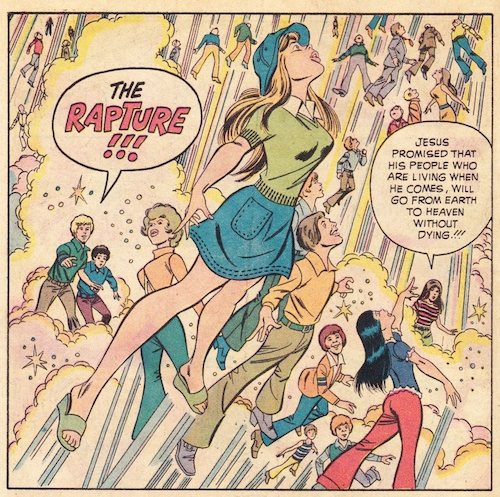
If the style here (and in the “Great Snatch!!!” panel last time) looks familiar, it’s because the artist who did the comic, Al Hartley, actually worked on Archie at one point—where he was asked to nix the Christian-influenced material he kept trying to fit in.
He agreed, but also petitioned the Jewish president of Archie, John Goldwater, to license a spinoff Archie series for evangelicals on behalf of the Christian publisher Spire. Goldwater agreed (God bless you, Mr. Goldwater), and Spire’s Archie series ran for ten years, during which time it avoided almost all of the subject matter that drew mass market readers to Archie, in favour of using the characters to woodenly push Hartley’s religious beliefs. It looked just like Archie, though.
Now that I’ve built it up, I promise I’ll drop in a few panels from it later on at an opportune moment. As a final note on it for now, Hartley also served at one time in the US Air Force.
But now let’s get back on track and see what it’s like to get Left Behind.
Left Behind
The Left Behind franchise began in 1995 with an airport thriller–style novel written by two dispensationalists: the minister (and former US Air Force member) Tim LaHaye, and the sportswriter Jerry B. Jenkins.

The franchise now includes:
- 16 novels, which between them cover the entirety of Revelation and have sold over 60 million copies
- 40 novellas for age 10–14 with the same basic plot as the novels, but all the characters are kids, and which have sold 10 million copies
- 4 films, a trilogy based on the first three books, and then a later reboot of the first film starring Nicolas Cage
- 4 first-person shooter computer games where the goal is to convert or kill non-Christians‚ which is also how the Crusades were supposed to go
Although the books had a much wider audience than the movies, I’m going to focus on the three original movies. The plots are pretty close to the first two novels, it lets me include lots of visuals, and to be honest I don’t think I can make it through reading an Infinite Jest-worth of Left Behind.
That said, I will briefly discuss what happens in the books after the movies conclude as well as the Left Behind: The Kids novellas.
The first Left Behind film was released in the very auspicious Y of our Lord 2K, but in October, well after the excitement over the date had died down. It made back its $4M budget, but did not have the massive take-up of the novels or A Thief in the Night.
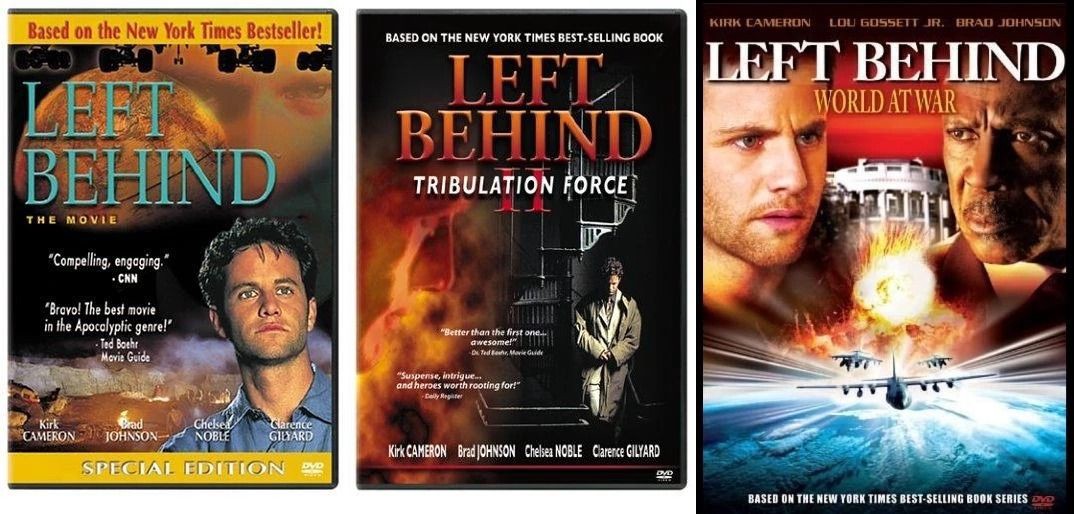
When the rapture takes place in the first film, the disappearances happen without any regard for the consequences, and not just the ones that fall into the important-but-not-urgent quadrant I mentioned before, like what happens to all the pets.
All over the world, in all the situations you could think of where people suddenly disappearing would cause catastrophic results, they do, and it does. This is represented on screen by moving cars losing their drivers and airborne planes losing their pilots, leading to car crashes, plane crashes, and even both at the same time. It doesn’t seem like these popular bumper stickers do much good after all:
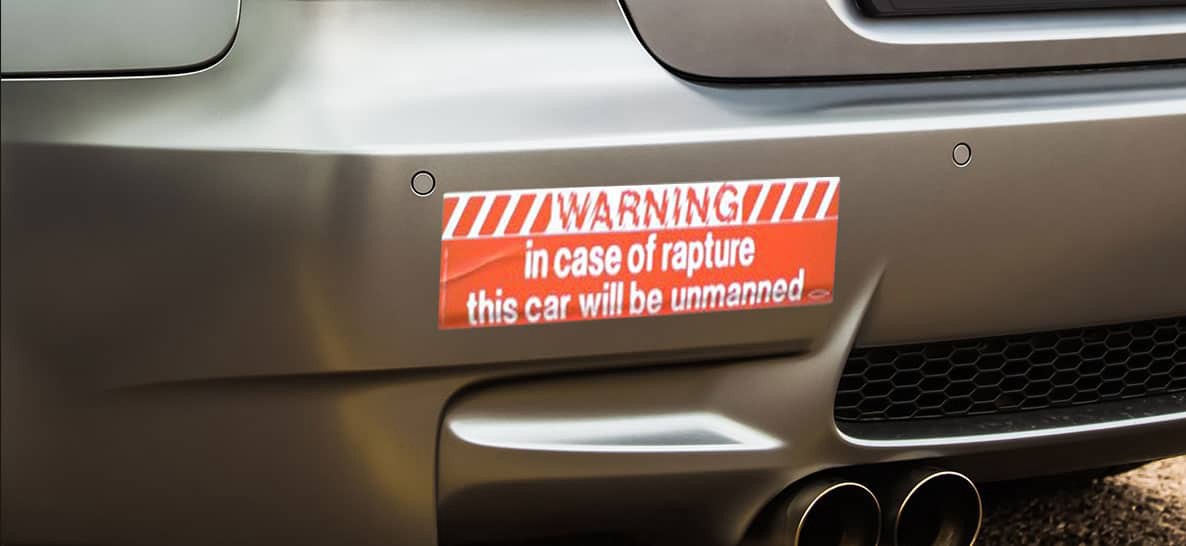
The two main characters in Left Behind are Rayford Steele, a commercial pilot, and Buck Williams, a TV journalist. At the time of the rapture, Rayford is flying an airliner that Buck is a passenger on. Rayford is married but has just kissed a flight attendant named Hattie who is not his wife.
None of them is religious, so all three are left behind when some of the passengers disappear, leaving the aforementioned piles of clothes in their seats. It is, however, a good thing for everyone who’s left that Rayford is still around to land the plane.
When Rayford gets home, he learns his religious wife and son have disappeared, but his Stanford-student daughter Chloe, who is also not religious and may have even encountered CRT in class, has not.
Although Rayford’s son is older, we learn that in the world of Left Behind, young children are automatically raptured, but it’s not clear where the age of accountability is set. It’s not discussed in the films but in the novels, fetal matter is also raptured.
Rayford takes the absence of his family hard:
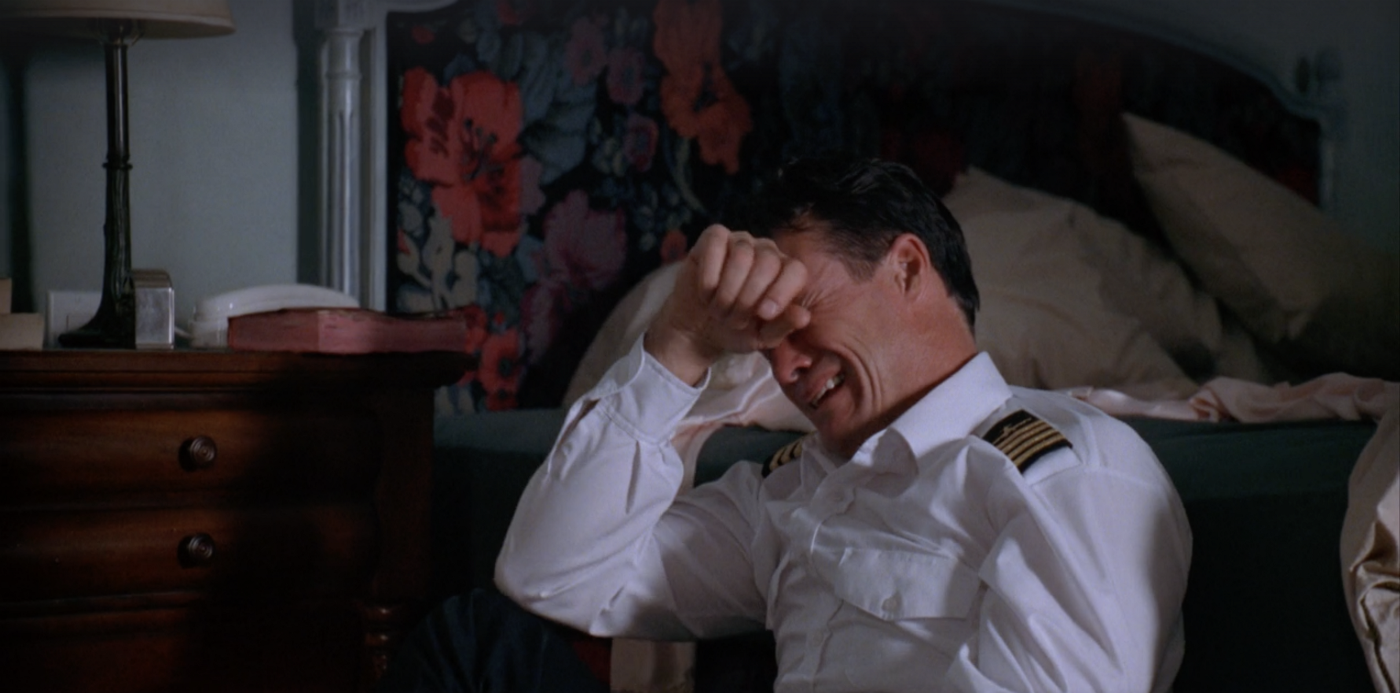
Buck has no dependents, but he’s still not stoked that millions of people have suddenly vanished:
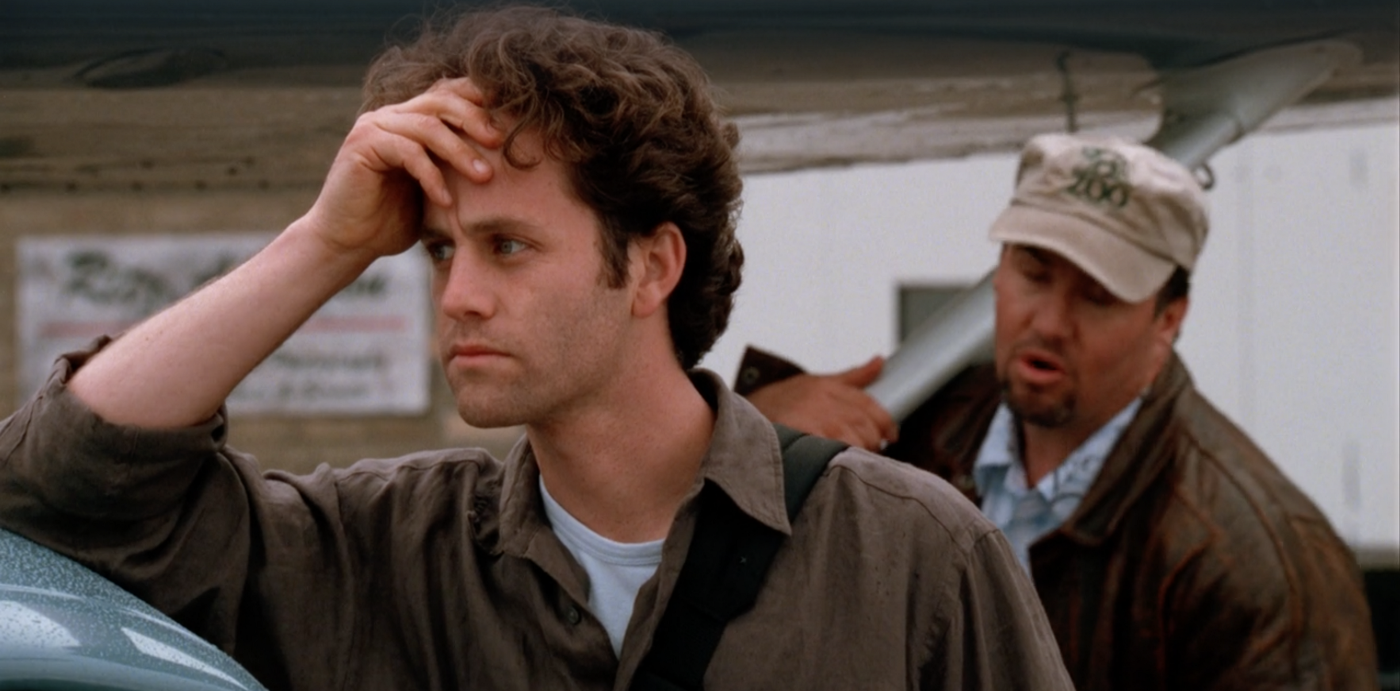
It’s worth noting that these non-religious characters think of the rapture event as “unexplained disappearances,” rather than immediately understanding the religious connection.
In fact, at this point, Chloe is more worried for her missing mom and brother than for herself. How wrong she is! Should’ve gone to Bob Jones U, Chloe. (Go, Bruins!)
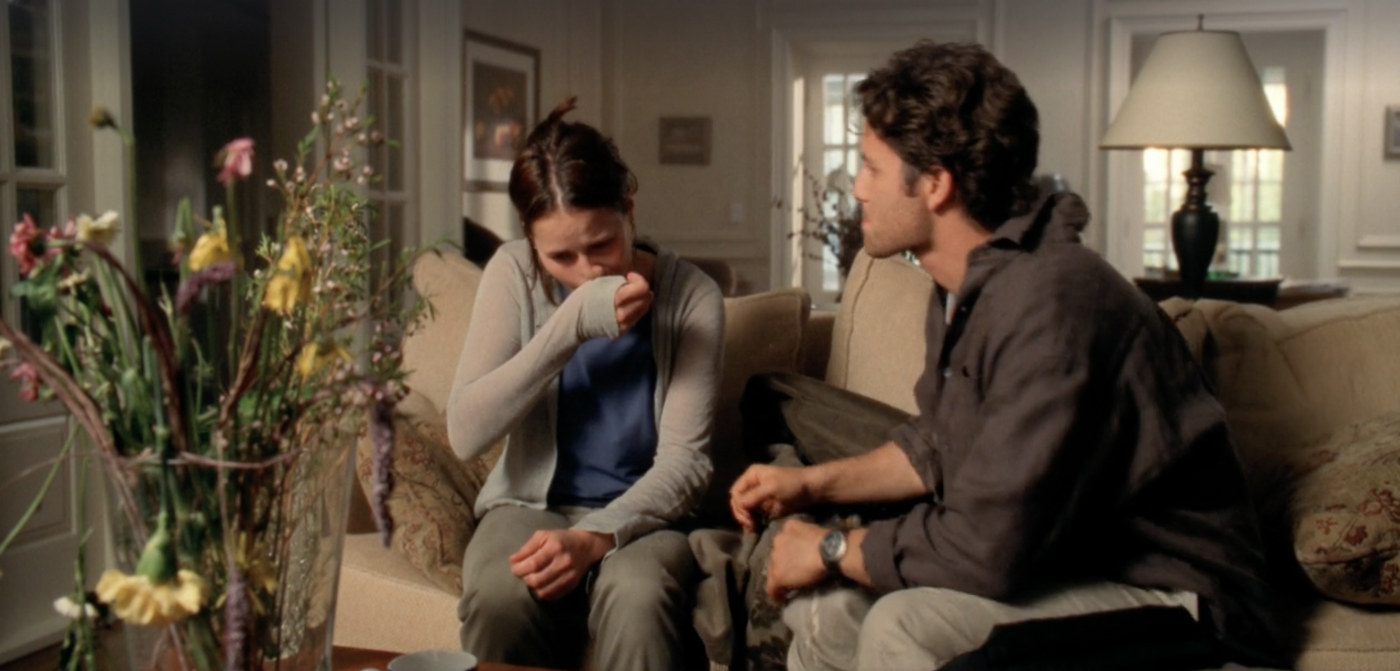
Pastor Bruce Barnes is the odd man out here. He does subscribe to the correct beliefs, and he thought he had accepted Jesus into his heart—but he obviously hadn’t, since he didn’t get raptured. And unlike the others, he knows what’s happened and what’s coming. His situation directly reinforces rapture anxiety in a way that the experiences of characters who aren’t religious, or whose religious beliefs are portrayed as incorrect, do more obliquely.
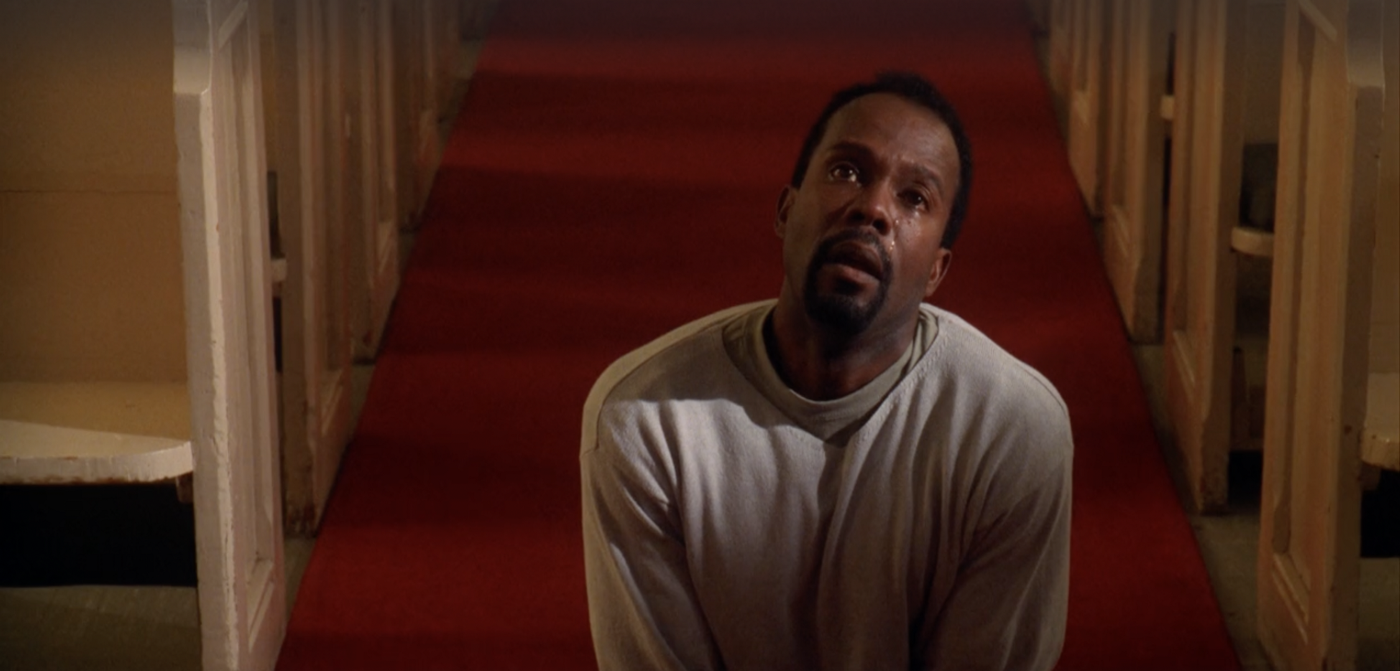
Left Behind in its various forms also figures prominently in stories associated with the #raptureanxiety hashtag:
I wasn’t equipped to think critically about what was being told to me by these people I trusted. Some of the first chapter books I read were The Left Behind series. I was a fucking child and somehow I was supposed to cope with both the rapture and hell #RaptureAnxiety /2— caity 🔪 (@spookybonch) December 9, 2017
I assume Caity is talking about the kids’ series here, which I’ll get into in some detail after I finish discussing how the tribulation appears in the films in Part IV.
Anyway, I should note that you can watch the three original Left Behind movies for free in glorious HD on Tubi, which I just found out is owned by Fox News:
A Thief in the Night
LaHaye called the A Thief in the Night movies the biggest influence on Left Behind. The series, which began in 1972, was hugely popular, much more in line with LaHaye’s novels than the film adaptations; allegedly 300 million people have seen the first instalment.
All four films were directed and co-written by Donald W. Thompson, who also served in the US Air Force. Thompson’s creative partner, Russell Doughten Jr., produced all of the films and co-wrote some of them. Doughten even shows up in the films as another minister who is left behind, but in this case his beliefs before the rapture are diametrically opposed to dispensationalism.
The A Thief in the Night films follow a young woman named Patty for the first two films and then the main character changes to a man named David.
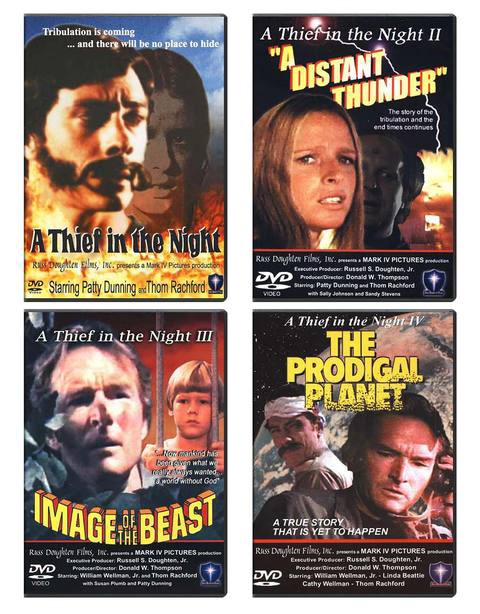
A Thief in the Night devotes a lot of time to comparing the relative levels of religious devotion of the characters and their responses to attempts to convert them before the rapture takes place.
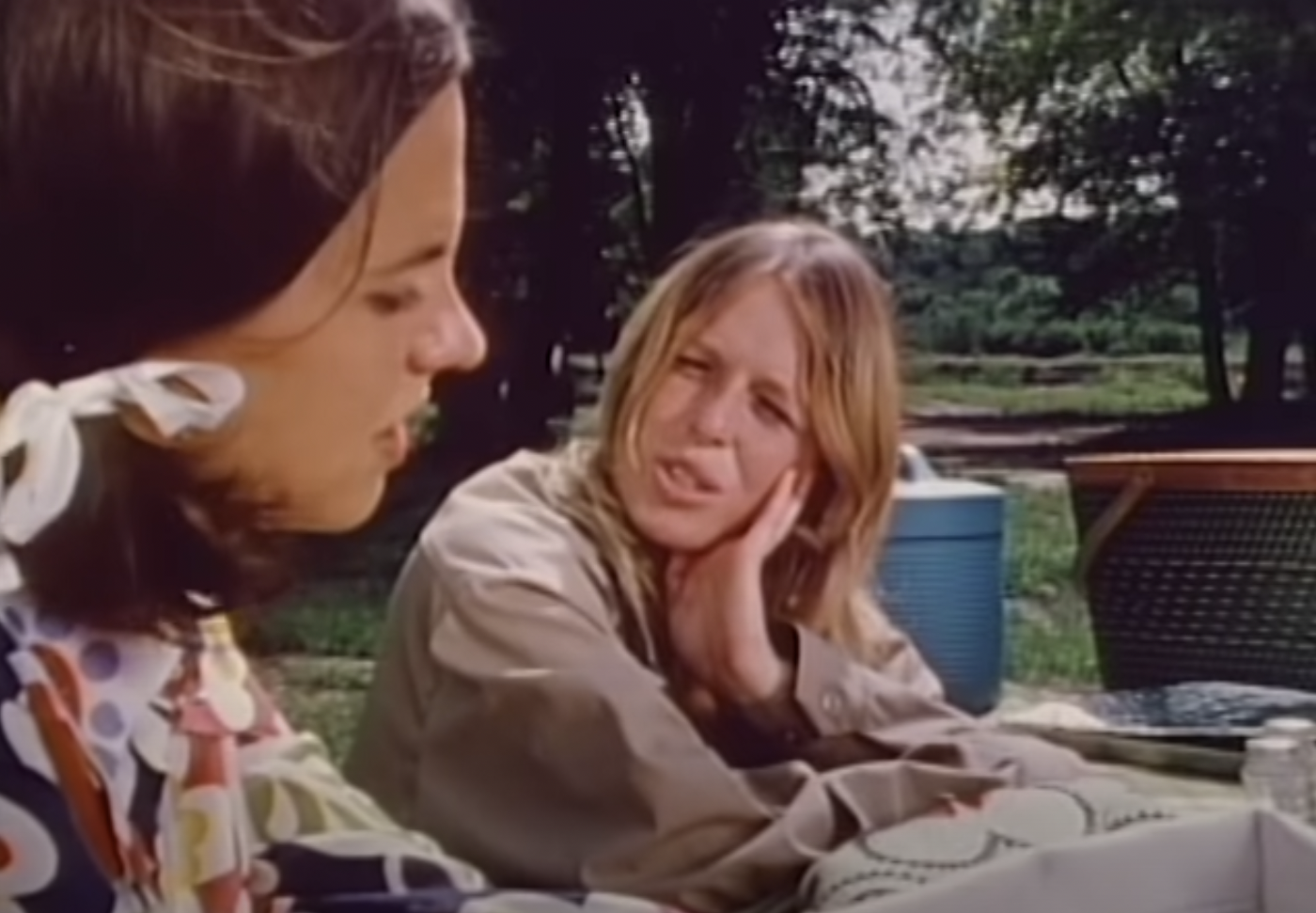
Patty, the main character, goes to a church where her minister, Reverend Turner (Doughten), preaches that the Bible is not meant to be taken literally. We see him do so in a very persuasive humanistic sermon that is also, dated “man to man” stuff aside, ironically the best piece of writing in either series.
Here is some of it:
For instance, ask yourself, would I appreciate beauty any less if Jesus were not virgin born? Or ask yourself, would I respect the rights of others less if he had not gone about the countryside performing miracles? Or ask yourself, could I really be considered so gross as to somehow be responsible for the death of the Son of God? Would I be so harsh as to condemn humanity to a fiery pit? No.
You can see where we’re led by these simple, obvious questions. To insist that the Bible is anything more than the poetic expression of those greater principles by which man lives with man is to box oneself in with opinion and counter-opinion.
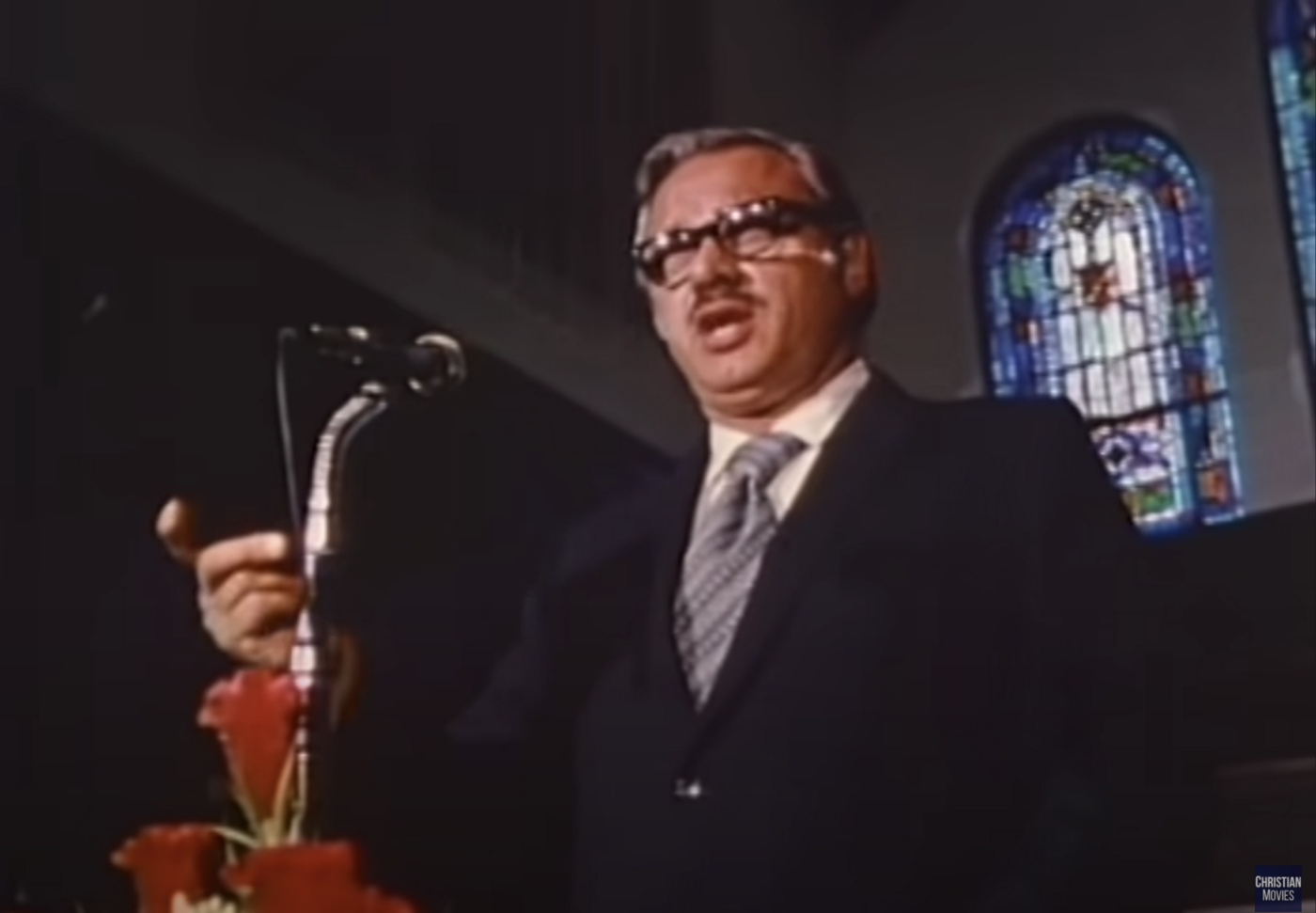
As well as listening to Turner, whose approach to Christianity is presented as invalid at the very least, Patty reads the Bible occasionally and tries to be a good person. But, as Billy Graham reminds us, getting into Heaven is “not about good things you’ve done, but about what Christ has done for you.” That is, have you let him in your heart in the right way? Because really it’s still on you.
Jenny, on the other hand, is a believer and goes to a different church, where Pastor Balmer preaches dispensationalist beliefs. She was converted by her special friend Duane, who is a youth group leader. He is also definitely not her boyfriend. Why would we even think that?
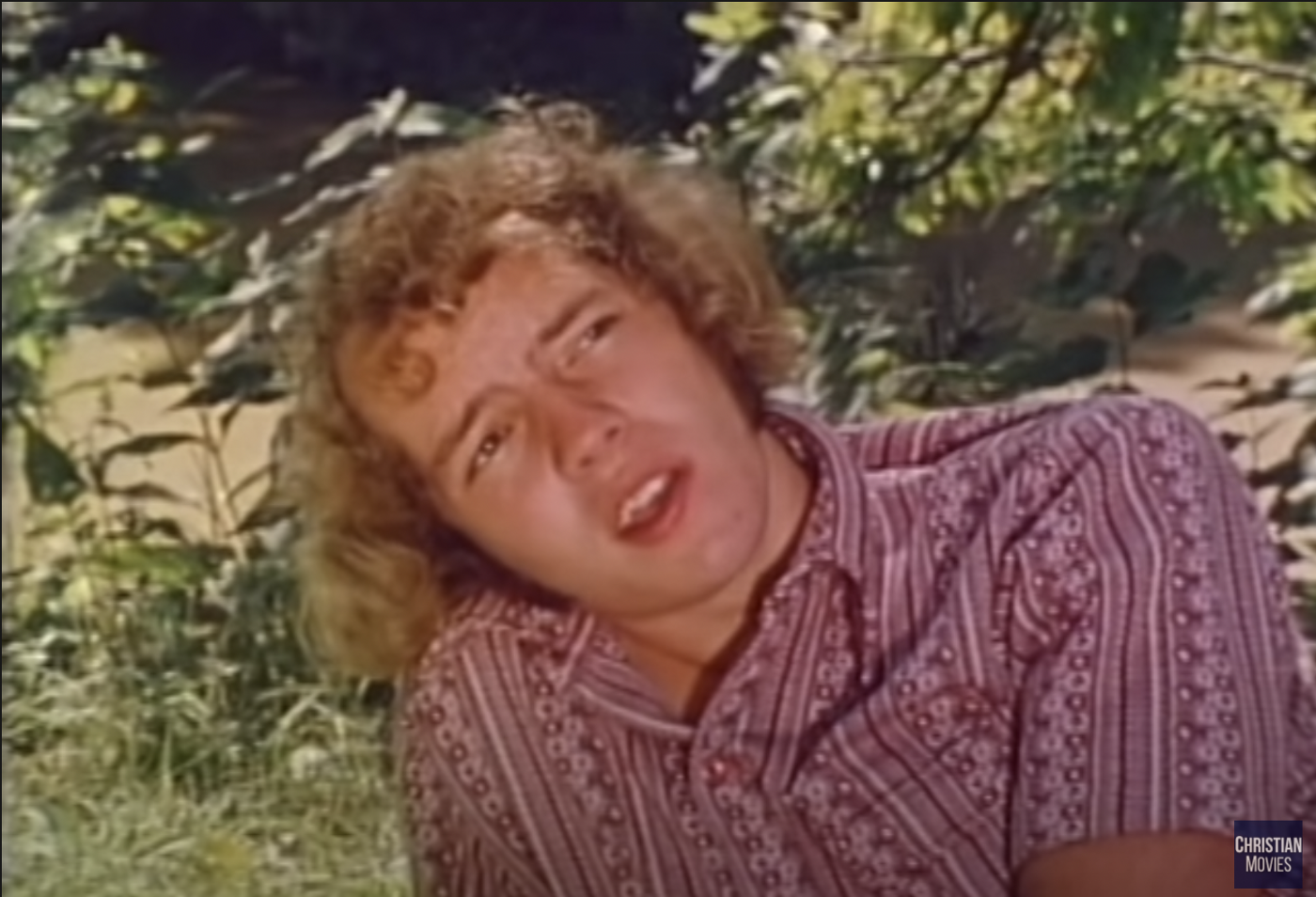
Jim, Patty’s husband, doesn’t seem to be religious and neither do Patty’s friend Diane and her husband Jerry. All the characters go to the fair together but Duane’s apocalyptic talk creeps everyone but Jenny out. Diane and Jerry even poke fun at Duane’s beliefs, with Jerry at one point pretending to be the Beast.
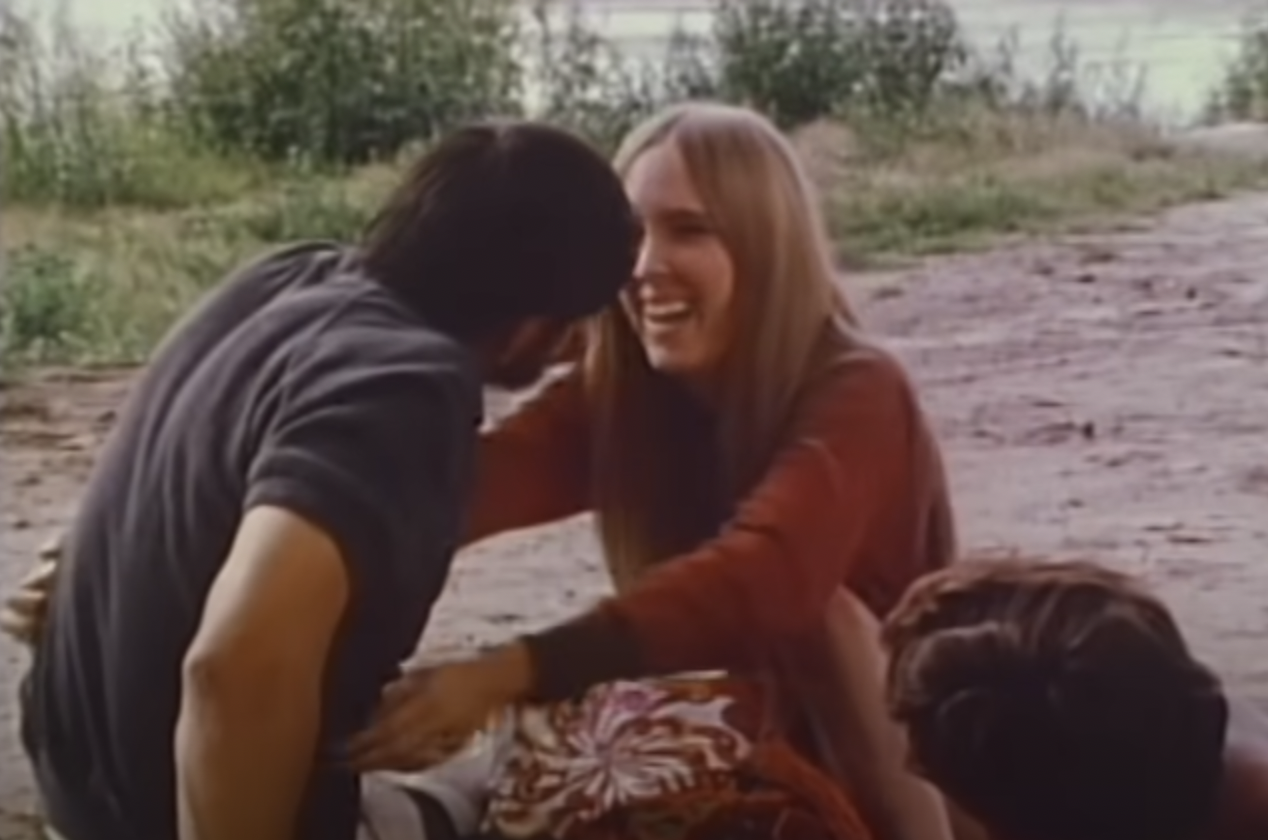
Jenny warns Patty and Diane again afterwards that they must truly let Jesus into their hearts to protect themselves from the imminent doom Duane has described.
Now is a good time to mention that the evangelical Archie spinoff (of which you can read more here) explains commitment to Jesus like this:
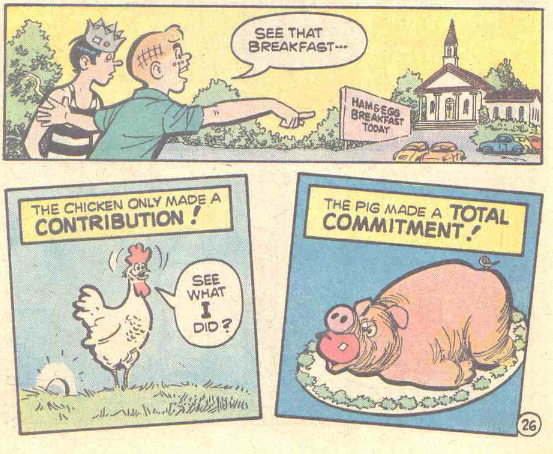
Patty refuses to change her beliefs, however, because she agrees with her minister about the nature of the Bible and thinks her approach to religion and relationship with Jesus is valid. Diane sticks to her guns too.
Jenny’s younger sister, who we see in church when Pastor Balmer is preaching, buys in after she has her own rapture anxiety moment: she comes home to a quiet house and a pot boiled down on the stove and starts screaming. But it turns out her mom was just absentminded and she and her grandmother are elsewhere in the house. Jenny’s sister, however, takes this opportunity to ask Jesus into her heart.
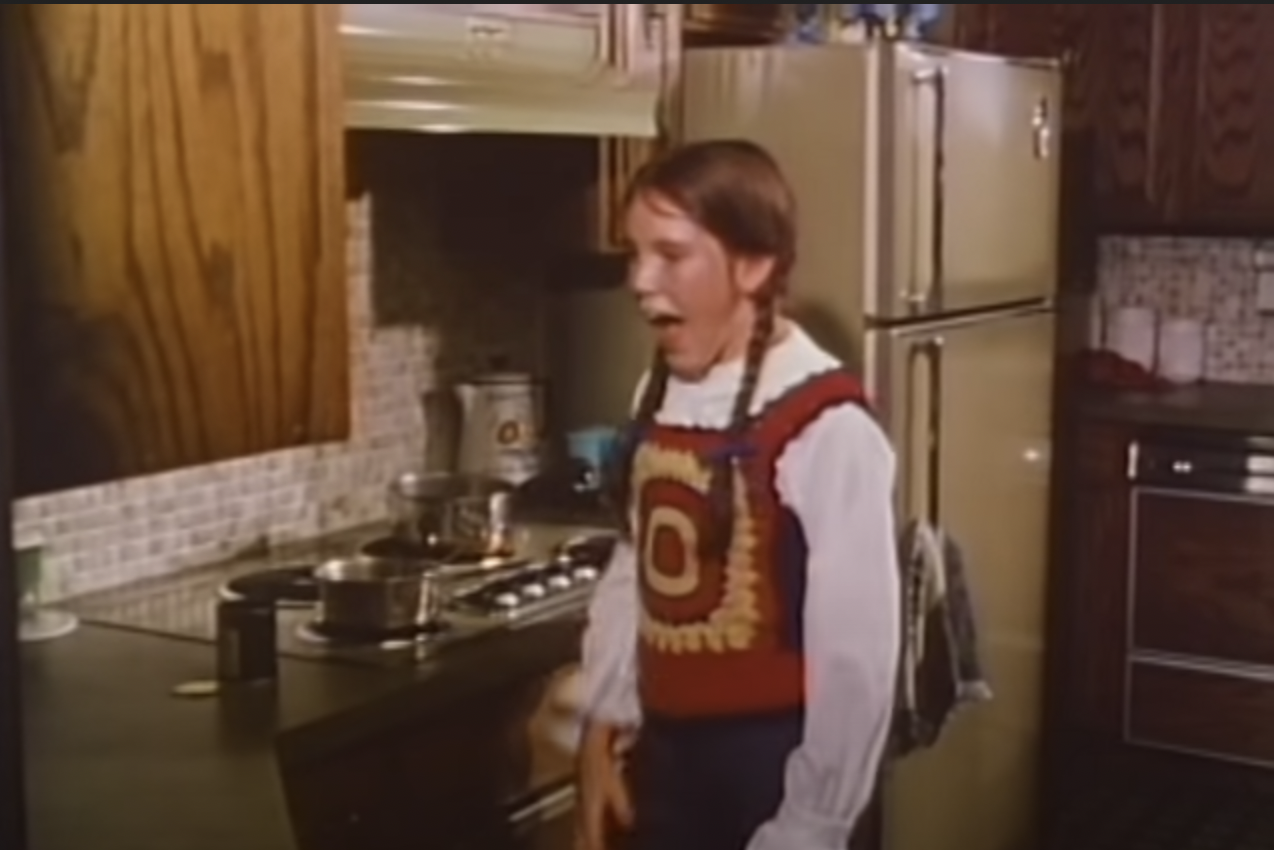
Patty’s husband Jim converts too, after he is bitten by a venomous snake at the zoo where he works and receives a blood transfusion that saves his life, and Pastor Balmer explains to him that accepting Jesus’s blood to save his eternal life is exactly like that. Balmer doesn’t even have to say what the snake represents and Jim commits right then and there.
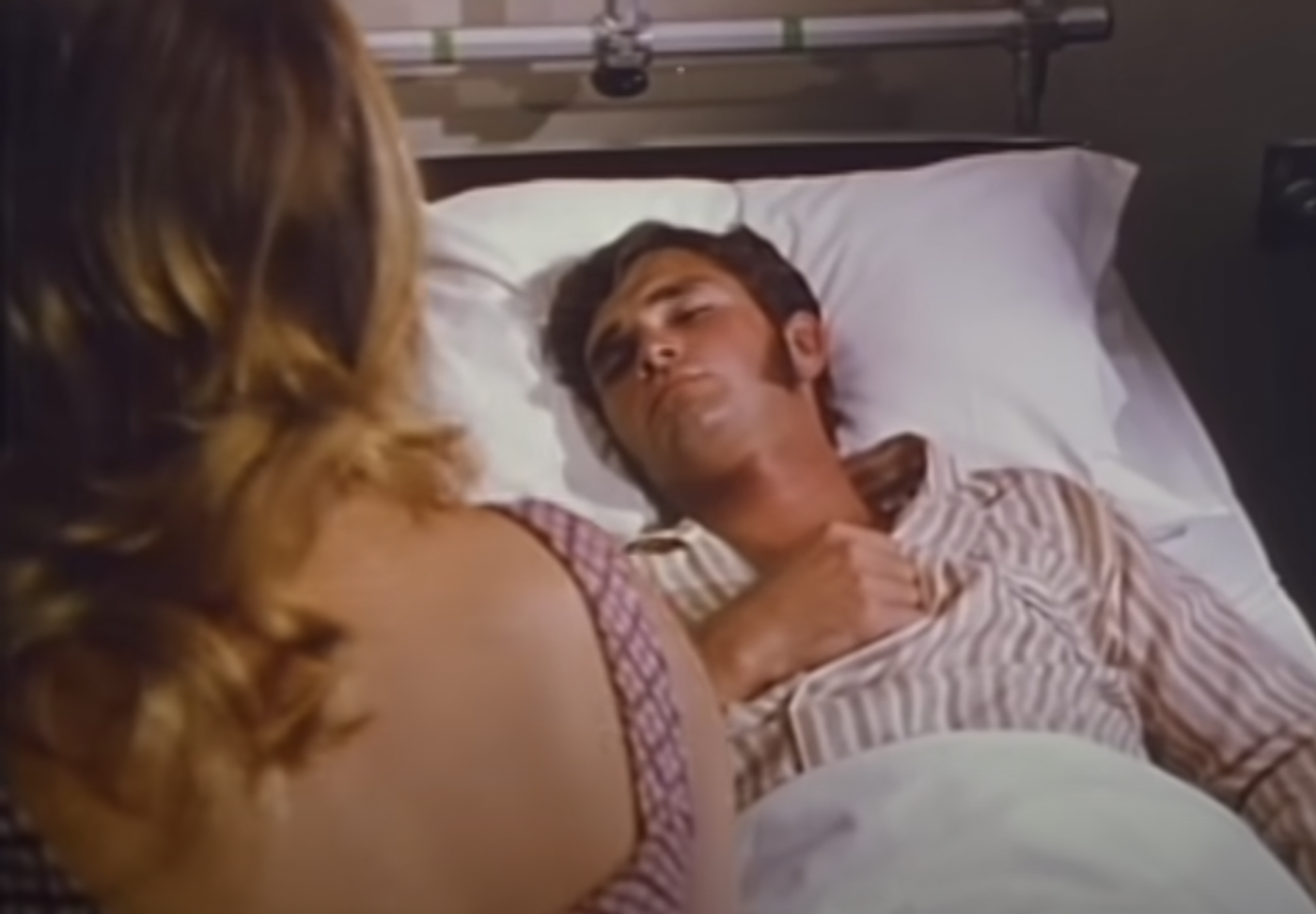
It’s worth reinforcing that although we see these characters commit to Jesus verbally and we are intended to trust that they have truly converted and will be saved, many believers who saw the film understood commitment to have an element you couldn’t represent in a film, and having once said something out loud like Jim or Jenny’s sister did wasn’t a comfort to them.
Regardless, now that we’ve nailed everybody down, as it were, when it comes to their relationship to Jesus, Patty discovers the rapture has actually taken place. She wakes up to a radio report of a mass disappearance that, like in Left Behind, includes mass car accidents and plane crashes, and then she sees Jim’s electric shaver still running in the sink. Duane and Jenny and Jenny’s sister are gone with him, so Patty and Diane and Jerry are going to be left to face the tribulation.
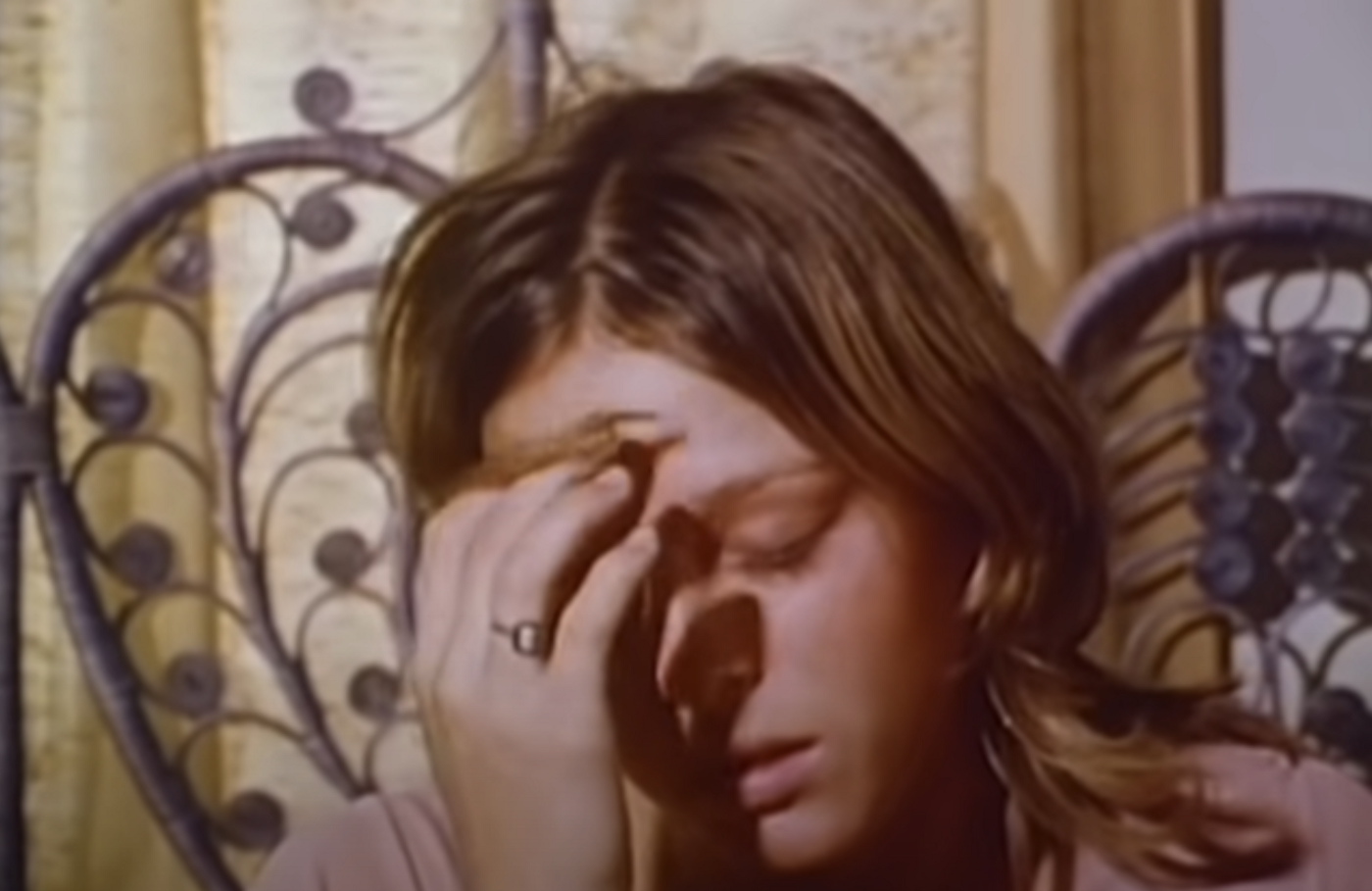
Whether young children get raptured is not mentioned explicitly, but we do only see one young child in the series and he is born shortly after the rapture — which means unlike in Left Behind, fetal matter isn’t raptured. I didn’t know this beforehand, but it was actually only in the late 70s that evangelicalism as a whole started to see life beginning at conception.
Oh, and it goes without saying that Reverend Turner is left behind too.
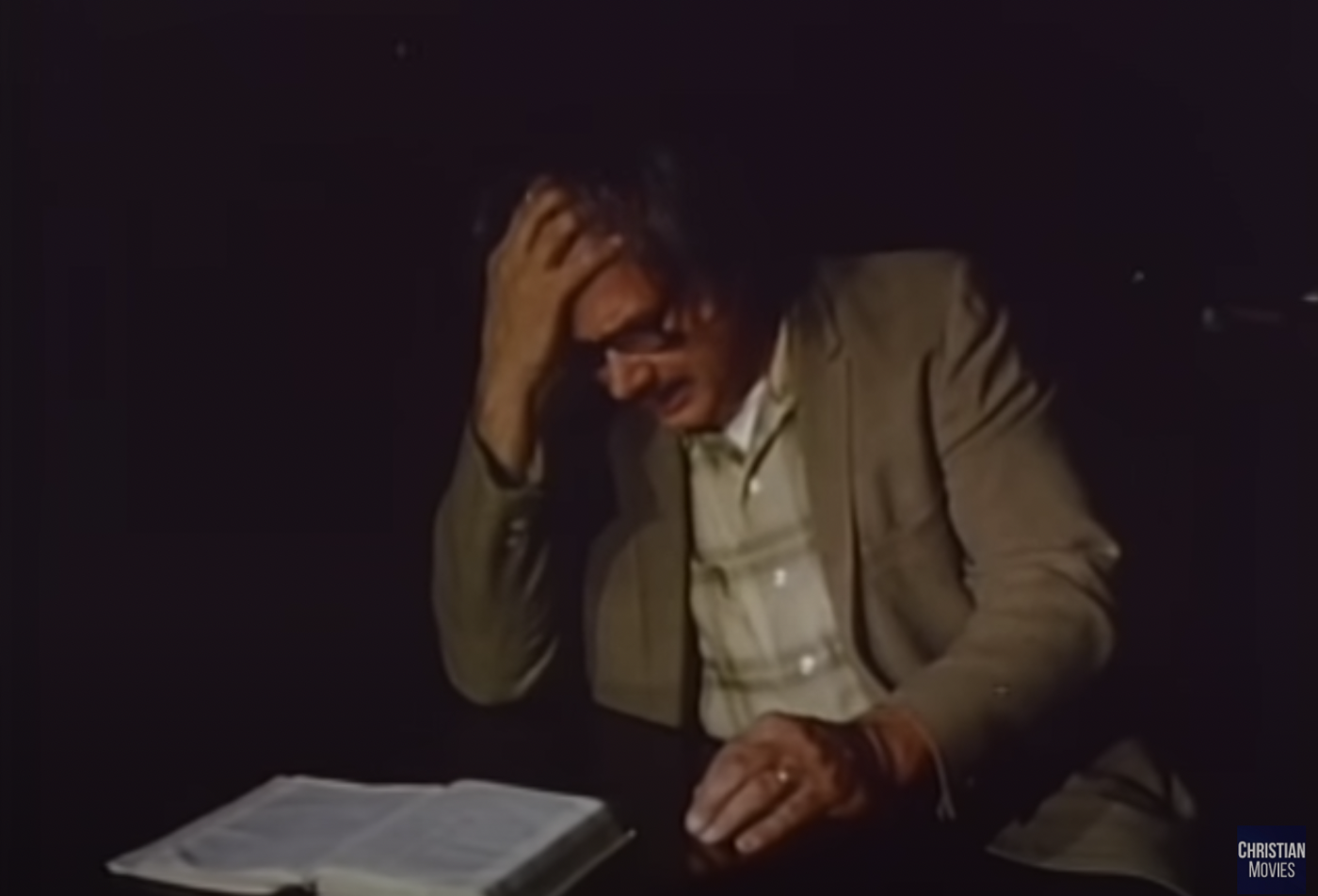
Like Left Behind, the A Thief in the Night series was also traumatic for many people because, regardless of the quality of the writing or production, it represented a scenario they were taught was real:
We had to watch The Thief in the Night in middle school. I remember repeatedly leaving the classroom and crying and dry heaving in the bathroom. I was finally allowed to go home sick. I was too embarrassed to tell my parents. My #raptureanxiety started at about age 7.— Lynn_Zebra (@lynn_zebras) December 11, 2017
You can watch the whole series for free on YouTube, although very much not in glorious HD:
I’ll get into how the tribulation is portrayed in the series in Parts V and VI.
But on a final note, it’s worth mentioning that the song that is covered by the youth group band—featuring Duane—during the opening credits of A Thief in the Night was itself a major inspiration for the series. Here’s a one-minute clip:
And now, a bonus section looking at the original song.
I Wish We’d All Been Ready
The 1969 song “I Wish We’d All Been Ready,” by Larry Norman, was inescapable for evangelicals with dispensationalist beliefs when it came out. It even shows up, in a surreally positive panel considering the subject matter, in the There’s a New World Coming comic a few years later:
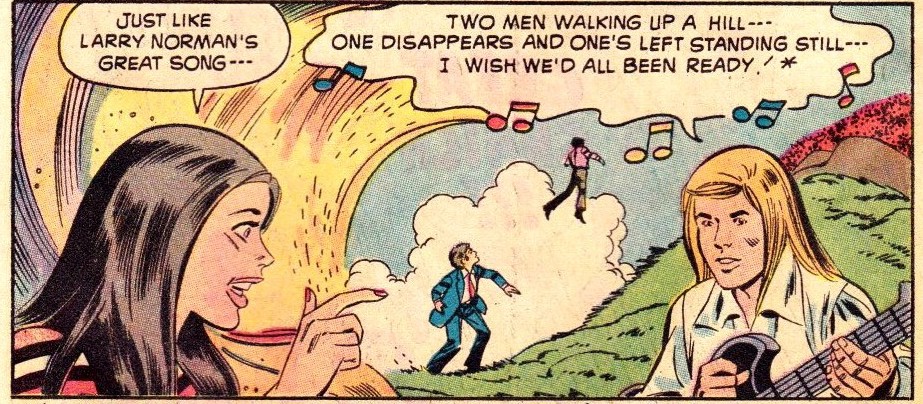
Here is Norman’s recorded version of the song:
Just like the other books and movies I’ve talked about, “I Wish We’d All Been Ready” also plays a major role in stories of rapture anxiety.
“The children died, the days grew cold, a piece of bread, could buy a bag of gold. I wish we’d all been ready. There’s no time to change your mind, the son has come, and you’ve been left behind!”
Lyrics that still haunt me. #RaptureAnxiety— George Mekhail (@gmekhail) December 12, 2017
Interestingly, whereas LaHaye was exactly the person you would expect him to be — for instance, he’s also known for a book of virulently homophobic “nonfiction” called The Unhappy Gays — and I wasn’t able to find out much about Jenkins, Thompson, or Doughten’s personal lives, Norman was a complex figure.
Although he always maintained a personal commitment to his faith, later in his career Norman publicly voiced criticisms of organized religion. And at one point, he also faced a controversy where he was accused of backmasking, hiding a Satanic message in his music, which was “wolf in white van.” Uh, sure? This incident appears in a fantastic novel also called Wolf in White Van, by John Darnielle from the band the Mountain Goats.
Speaking of bands, Norman even saw the punk bands The Damned and Richard Hell — of all the band names — play a show in 1977, and he said afterwards that he actually preferred punk to disco:

Anyway, speaking of “the music,” what happens to all the characters left on earth when they face it, a.k.a. the tribulation, after the rapture? We’ll find out in Parts IV, V, and VI. And then, to close things off in Part VII, I’ll talk about the signs that the End Times are allegedly coming and what the political consequences are of seeing world events this way.
And wow, so many possible choices for related songs to end on, just based on the last few paragraphs alone. I’m going to go with 1977’s “Another World” by Richard Hell.
Because evidently I feel like showing off my musical knowledge this time, I’ll also share the runners up:
- “I Fall” by The Damned (1977)
- “Disco’s Dead” by The Bags (1979)
- “Heretic Pride” by The Mountain Goats (2008)
- “Archie, Marry Me” by Alvvays (2014)
Subscribe to The Golden Age of Apocalypse
Get the latest posts delivered right to your inbox
